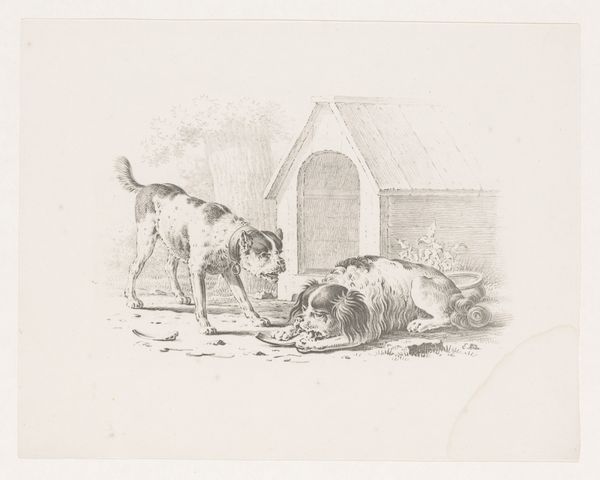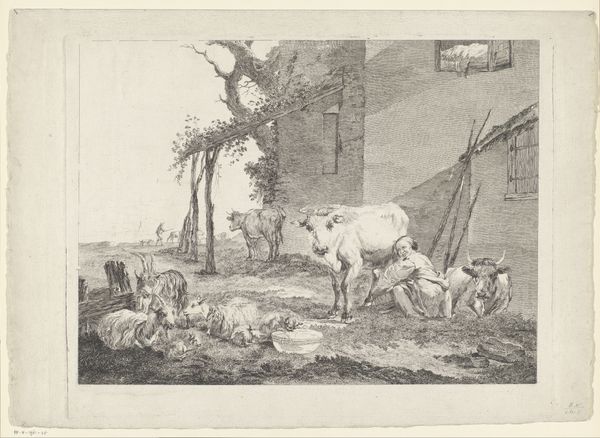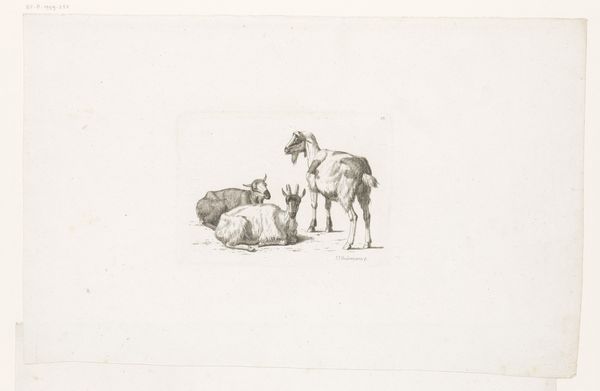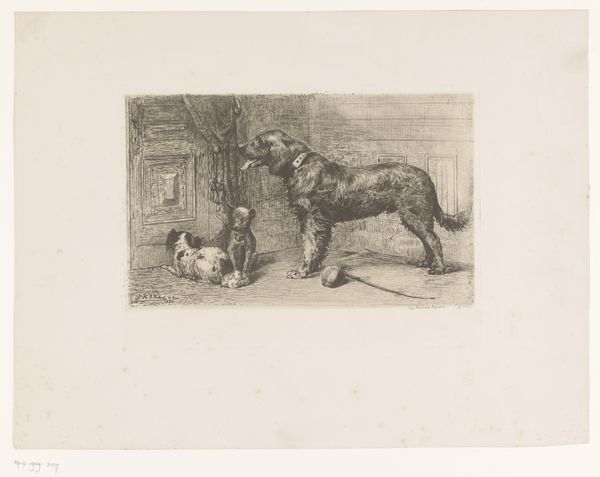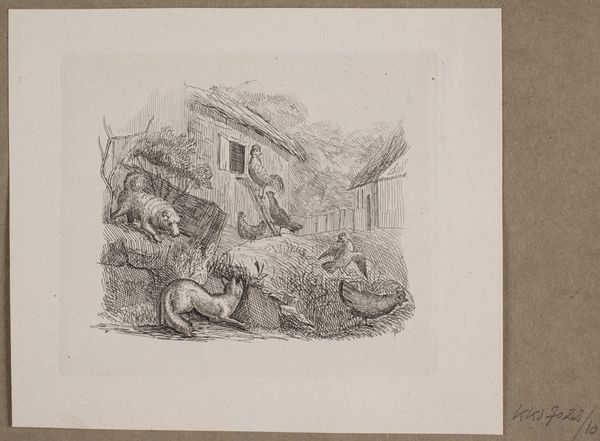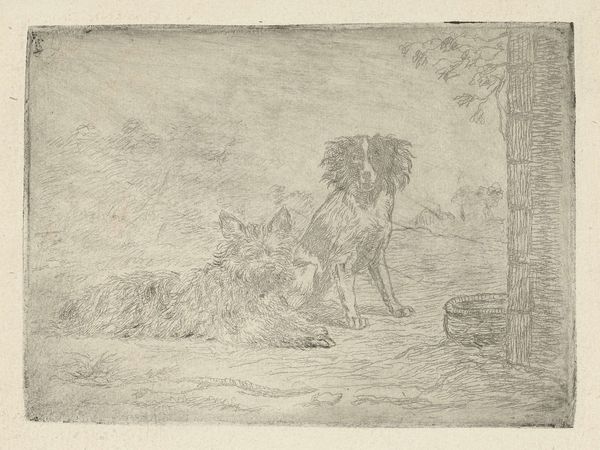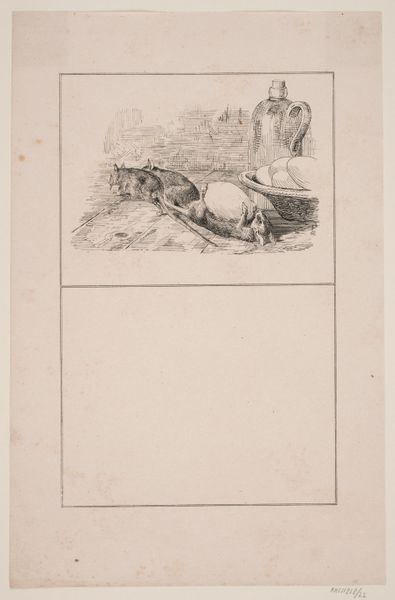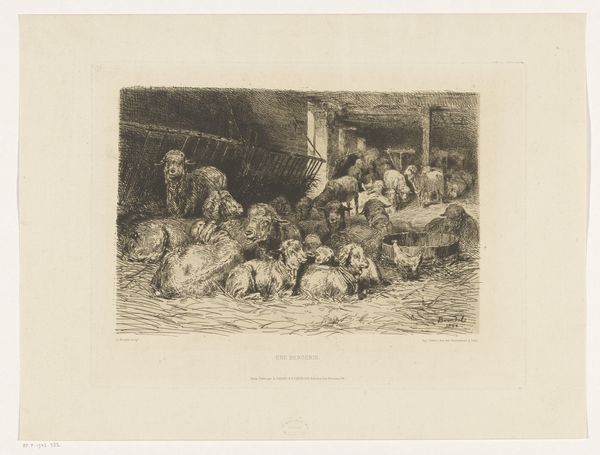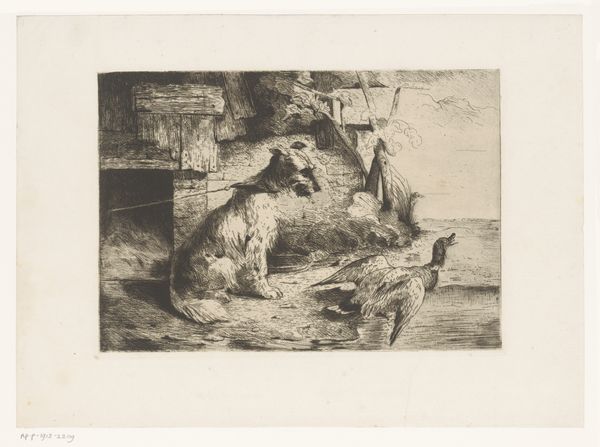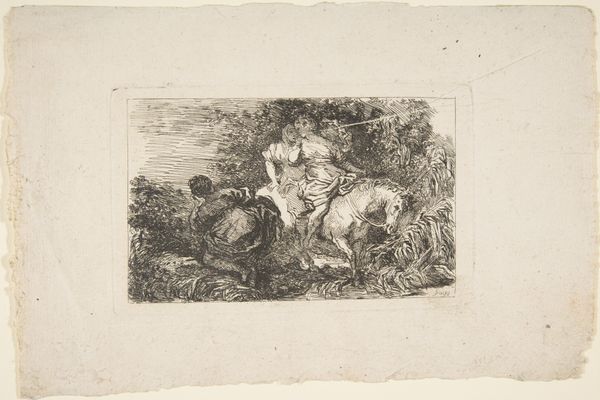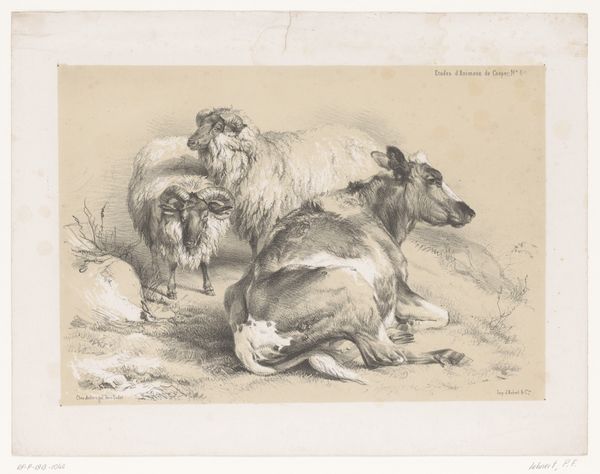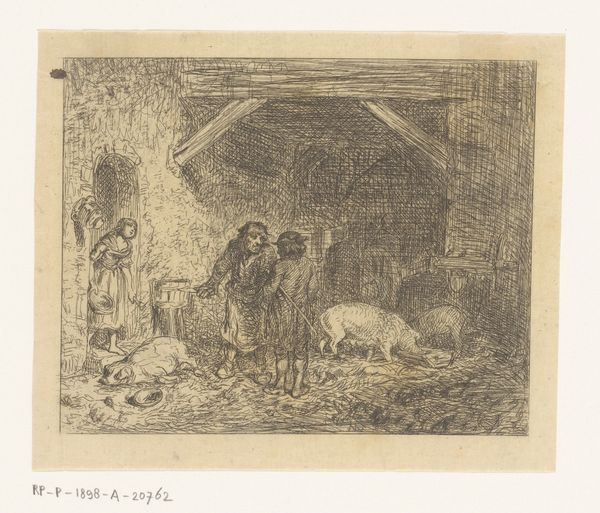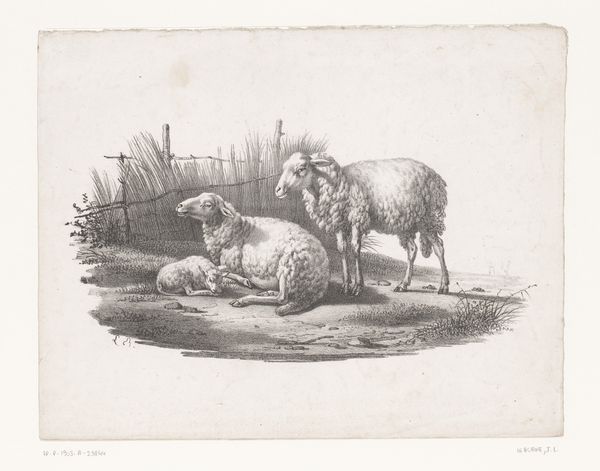
Dimensions: height 147 mm, width 195 mm
Copyright: Rijks Museum: Open Domain
Editor: We're looking at "Girl with Sheep and Lamb" by Dirk van Lokhorst, a pencil drawing from 1859 held here at the Rijksmuseum. It has a sweet, almost sentimental feel. What strikes me most is its quiet simplicity. What stands out to you? Curator: The drawing, in its delicate realism, presents an idealized vision of rural life that was very popular in the mid-19th century. Notice how the girl is positioned almost as a caretaker, a tender figure within the domestic sphere. It echoes the broader social narratives concerning women and their connection to nature and nurturing roles, doesn’t it? Editor: It does. It feels very posed, though. Did this idyllic vision of childhood reflect the reality for most young girls at the time? Curator: Not necessarily. While art often sought to capture authentic moments, it was heavily influenced by prevailing social values. Artists had patrons, you see, with particular preferences. Images like this reinforce bourgeois notions of pastoral harmony, often overlooking the harder realities of agricultural life for many. This makes us ask, what role does this idealized imagery play? Editor: So it's more about creating a desired image than showing how things actually were? Curator: Precisely. The composition—the girl framed by the sheep and the soft light—aims to evoke a sense of innocence and peace. Think about how this contrasts with art that began emerging later, questioning the established order. Editor: That's a great point. Thinking about it that way really shifts my perspective. Thanks. Curator: It makes you consider the painting less for what it shows, but for the narratives and values it reflects, and often, obscures. A great lens for interpretation, I find.
Comments
No comments
Be the first to comment and join the conversation on the ultimate creative platform.
